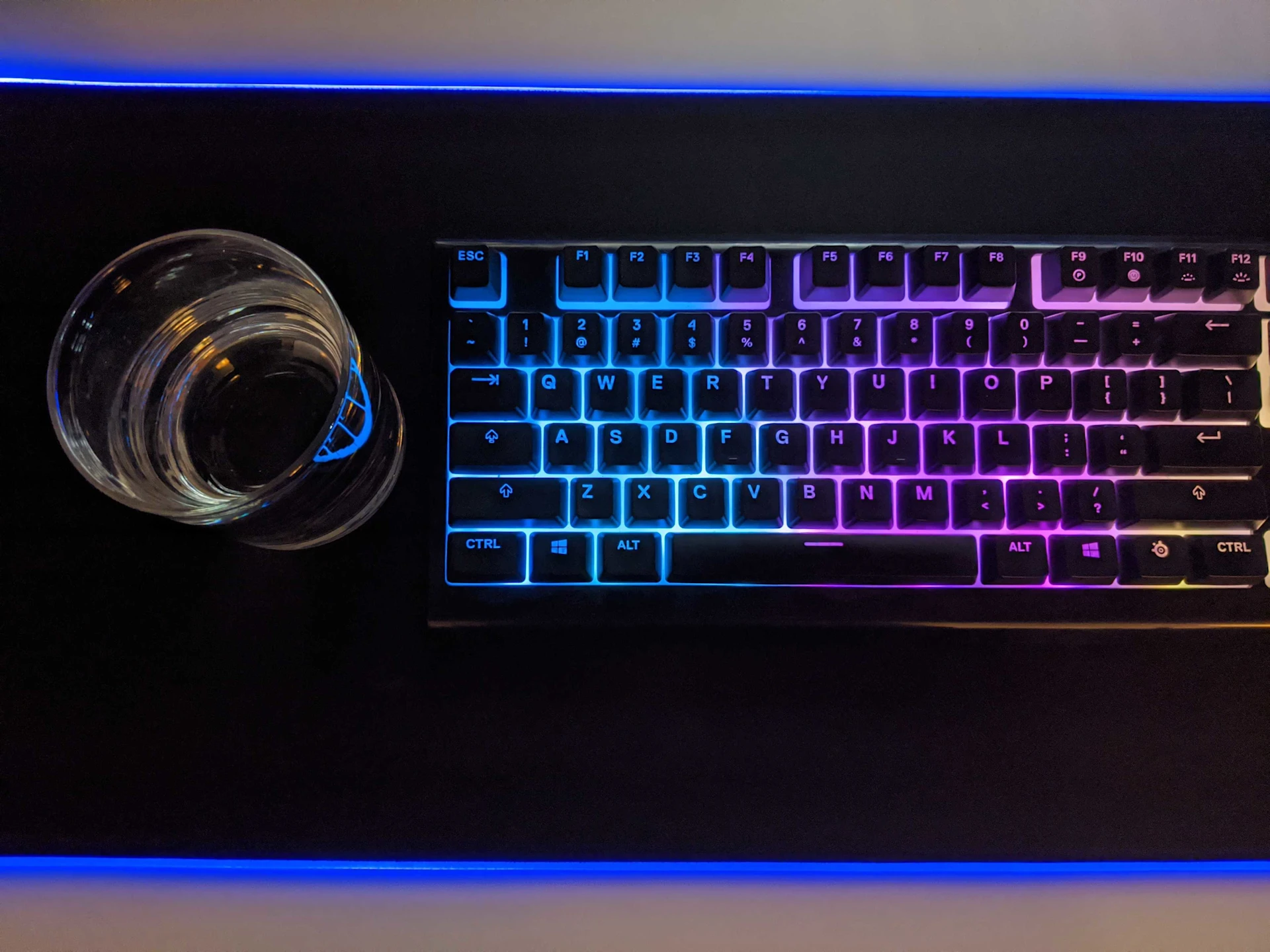
Spilled Water On Your Keyboard? Here’s What To Do (And Not Do)
Don't panic! Mitigate the damage with these 8 do's and don'ts.

Accidents happen. Here's what you need to do to prevent dead keys or an entirely dead keyboard.
DON’T: Put it in rice
Many people think putting wet devices in rice will remove moisture, but it actually adds wet starch to the problem.

DO: Consider a water-resistant keyboard
If all else fails and your keyboard gets fried, all you can do now is ensure that you don't make the same mistake twice.
An IP32 water-resistent keyboard like the Apex 3 or Apex 3 TKL has enclosed circuits and built-in drainage channels, so you can rest assured that a spill won't end your keyboard ever again.
DO: Unplug it ASAP
Unplug the USB it to cut the power (or remove the batteries if it's a wireless keyboard).
DO: Flip it oer
Stop liquid from going into the keyboard by turning it upside down until the liquid stops dripping. Ideally, leave it flipped over for 24 hours to dry.
DON’T: Use a paper towel
Avoid using paper towels, tissues, or anything that adds more dust and debris to your wet keyboard, just like avoiding rice.
DO: Use a lint-free cloth
This will help avoid adding unneccesary dust and debris to the keyboard.

DO: Carefully disassemble the keys
If your keys are still sticky after drying, gently remove the membrane or keycaps near the affected area. Use a keycap puller if you have one. Rinse any sticky keycaps with warm water or an alcohol swab. Be sure to take a picture or keep the keycaps in order, so you can easily reassemble them.
DO: Disassemble further if keys are still not working
If keys are acting up, you might need to unscrew your keyboard and try to dry out any moisture that seeped further in. If this still doesn't work, you might be running out of options aside from taking it into a shop or replacing it entirely.
Read More

When she's not wreaking havoc as Techies in Dota 2, Megan dabbles in almost any PC game, most recently Overwatch, Hades, and Warzone.